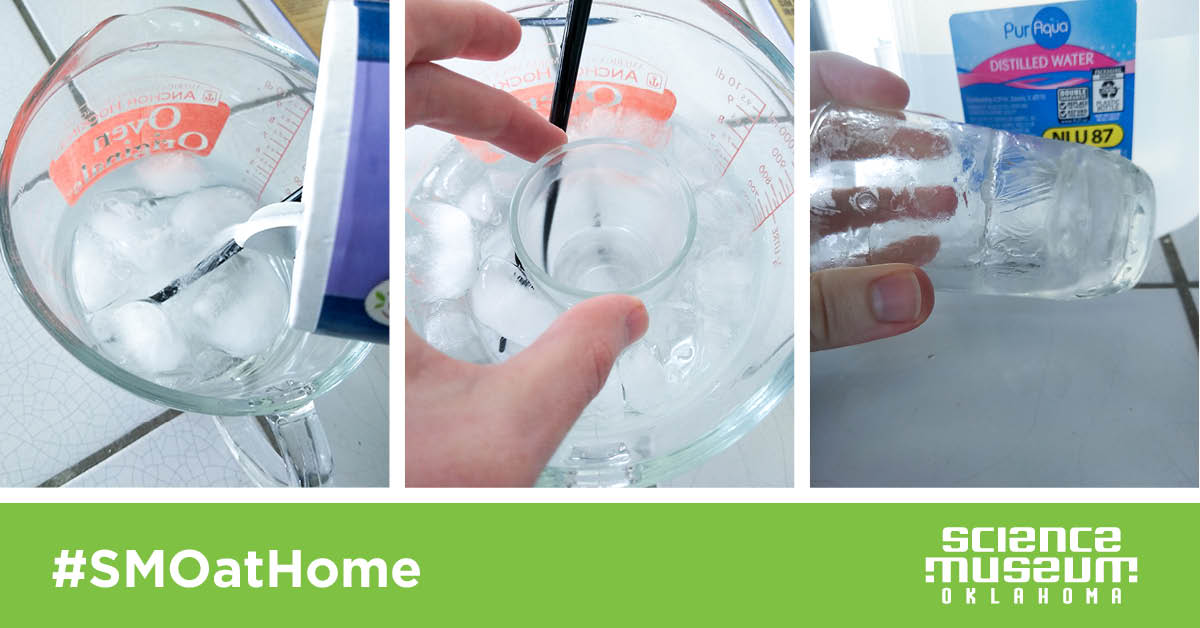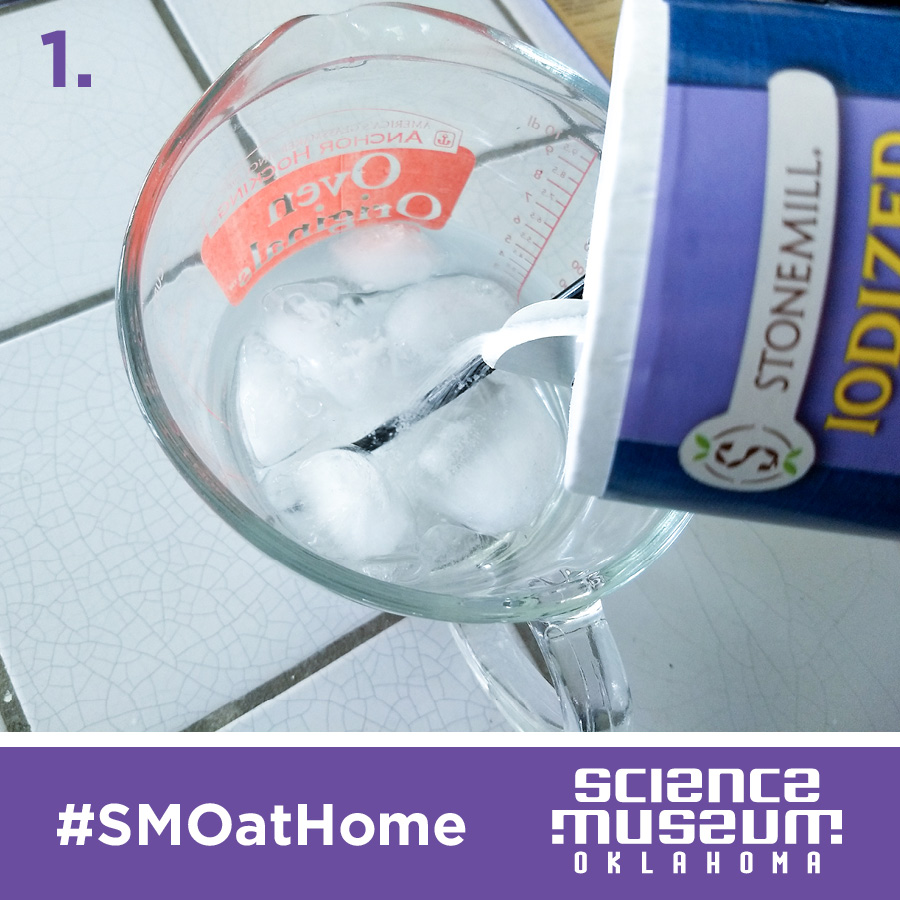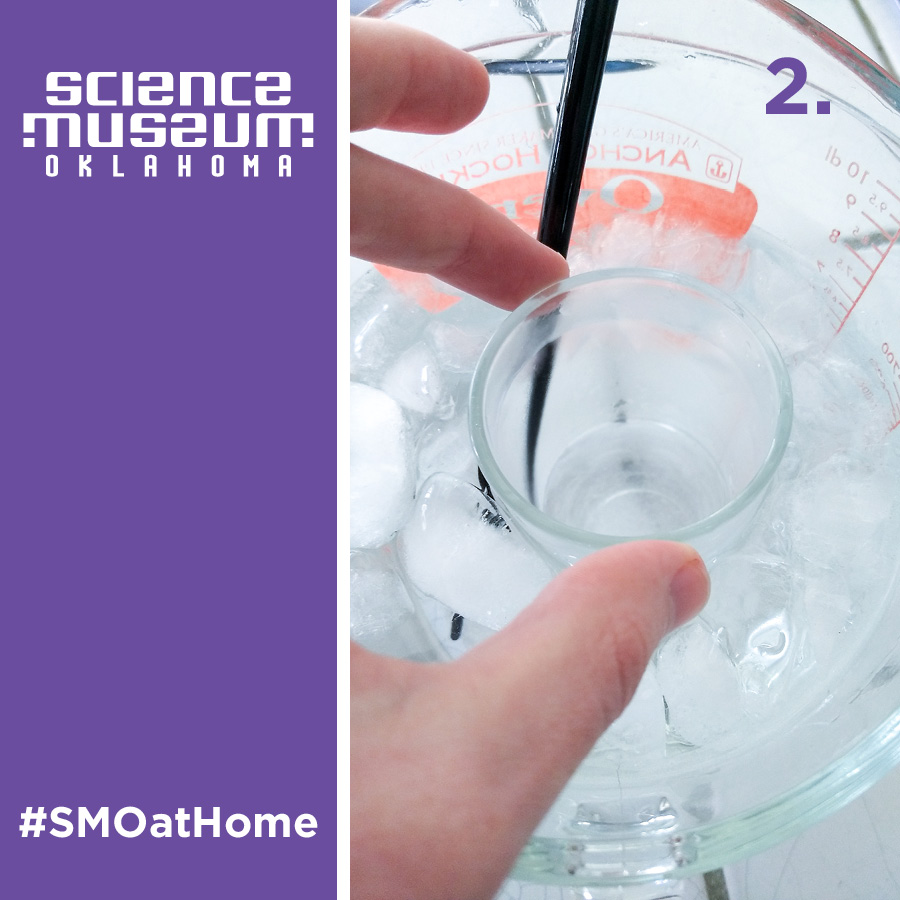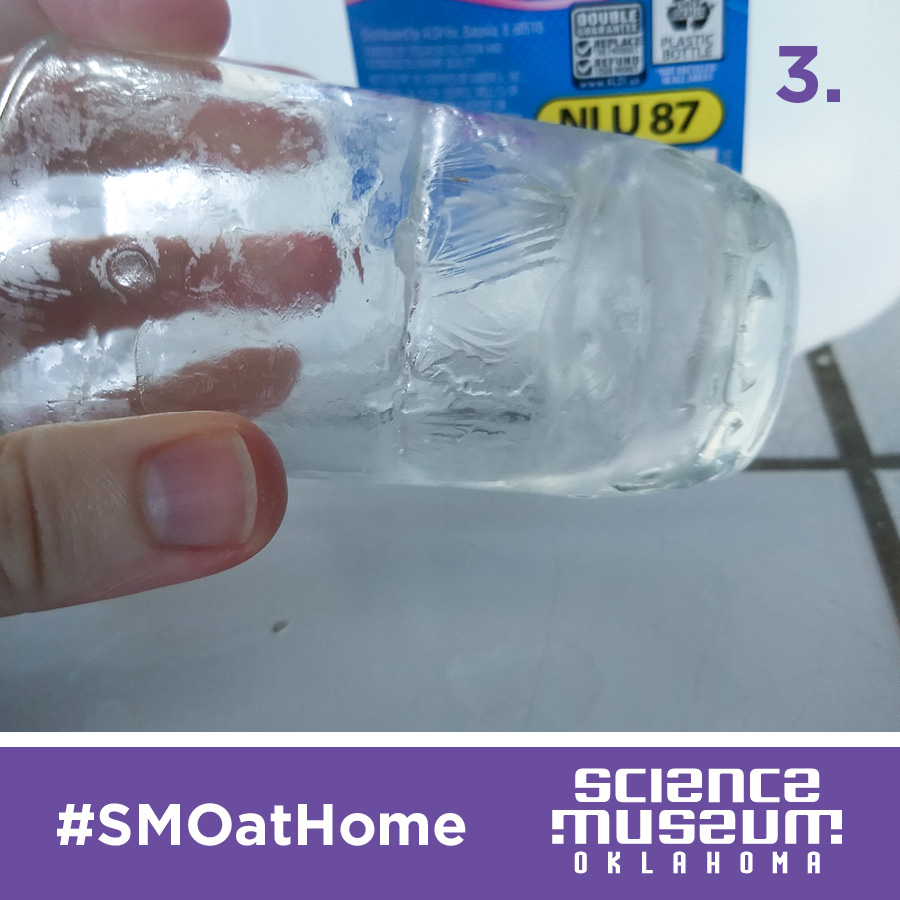Try This: Make a Hail Stone
Hail is both startling and impressive. It can also be very dangerous! In this #SMOatHome we're investigating some ice science to help us better understand this severe form of precipitation — let’s make a hailstone.

Here’s what you need:
- A small glass, like the kind you might drink juice from
- A bowl that the small glass can fit into
- Crushed ice (if you have cubed ice break it up so it has a lot of surface area)
- Salt
- Something to stir with
- Distilled water*, you can distill your own water at home if needed or use regular, clean water if necessary
- A clock
- Patience
*You can use regular tap water or filtered/bottled water, too. The results may not be quite as dramatic as with distilled water, but it will still work!
Here’s what to do:
1. Put crushed ice and water into the bowl or larger container. Don’t use all the water though, you’ll need just enough water left to fill the smaller glass slightly less than half full.
2. Add the salt to the larger container and stir. Be generous with the salt, it doesn’t hurt to have more salt than will dissolve into the ice water.
3. After stirring, place your smaller glass of water into your salt water and give the salt water solution another stir.
4. Wait one minute. Stir the salt water for a few seconds. After another minute repeat this step at least five more times so that you've stirred the salt water solution for a few seconds each minute for about six minutes or a bit longer.
5. Finally, drop a very small, fresh piece of crushed ice into the small glass filled with clean water. Observe what happens! Be prepared: The water in the small glass should freeze to the point that if you turn it upside down, the now frozen water stays in place.
What is happening:
Hail forms very high in the atmosphere when water in moisture rich wind is absorbed into an above storm by rising wind called an updraft. The water is then held up where the temperature is very cold — well below the freezing point. The suspended water becomes supercooled, just like the atmosphere around it, but doen't freeze solid just yet. It needs something to hold onto — some sort of “friendly” speck.
In a thunderstorm, there are little ice crystals. Once one of these super chilled drops of water meet up with one of these ice crystals, there's instant “friendship” — the water freezes around the ice crystal and makes a little ball of ice we know as a hailstone, or simply as hail. If that same storm is really powerful, strong winds can lift that little ball of ice back up, higher and higher in the storm cloud. If this happens, that ball of ice can find even more supercooled water and grow even bigger. Eventually this ball of ice will get too heavy for the storm clouds and winds to carry and finally drop to Earth as gravity pulls it down.
How was this activity like what happens when hail is formed during a thunderstorm? If you do this activity at home, share your results with us using #SMOatHome!







